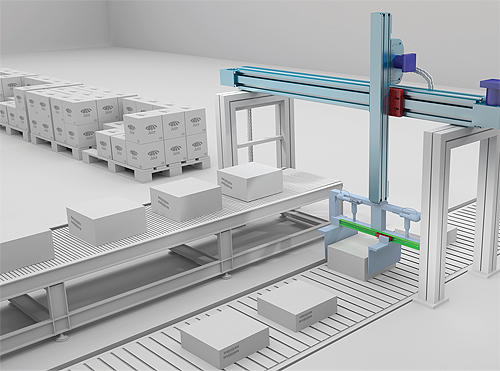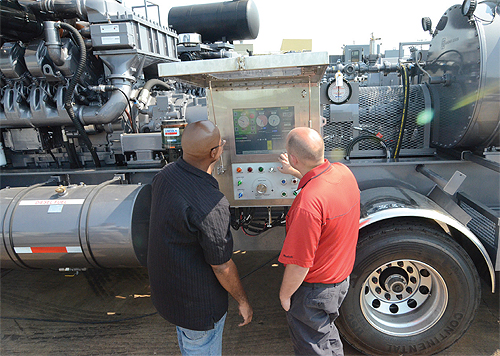by Michelle DiFrangia, Assistant Editor, @wtwh_michelle
According to research by MarketsandMarkets, the global market for industry control and factory automation will grow at a CAGR of 8.53% through 2020—so that all industries combined will spend $301.9 billion on automation by 2020. In addition, many research organizations estimate that there will be about 50 billion devices installed in industrial applications by 2025.
No wonder: Automation serves two purposes for an end user, regardless of business size, according to Mike Everman, principal and chief technology officer at Bell Everman. “First is the obvious reduction in labor costs, with strong returns on automation investments. Second, there’s overall improvement in quality of your component or process,” he said.
That’s because automation eliminates the human error of manually executed tasks. Automation also lets engineers build more cost-effective safety into work environments and machines, especially when they build to universal standards.
“The recognition and adoption of ISO and IEC safety specifications is the basis for creating common, globally compliant methods and safety designs and allows OEMs to create a single design standard that may be deployed anywhere in the world, thus reducing the variation that had previously existed based on geography or regional requirements and preferences,” said George Schuster, functional safety expert, Rockwell Automation. “Competitive OEMs realize that safety is a core value within their company and that globally compliant machinery is part of a larger corporate commitment to safety and risk management. This proactive approach to safety also provides improved access to new markets and opportunities to optimize operational efficiencies and cost competitiveness.”

Photo courtesy of Rollon
Although standardization helps boost safety, an increasing number of end users are looking to buy special-purpose automated machinery in the form of custom-integrated stages, Cartesian CNCs and robots. What’s more, according to Everman, the trend for end users to automate has gained momentum with the ready availability of robotic platforms—not just Cartesian, but also Delta and SCARA. “With end users increasingly exposed to a range of robot designs and kinematics, they have become adept at visualizing how a particular device can replace a person,” said Everman. He added that in recent years, engineers have become particularly enamored by the elegance and fluidity of Delta and SCARA robots, though Delta and SCARA robots have cost and ease-of-control disadvantages compared to Cartesian robots.
There’s another caveat: No matter the robot subtype an engineer uses for automation, all such machinery needs ongoing support. “But we see the role of system integration is shifting under two contradictory trends,” said Samuel Bouchard, president at Robotiq, Quebec, Canada. “On one side, robots that are easier to commission are reducing the need of integrators for simple applications. Many companies are thus doing more simple integration on their own. On the other side, there is a scarcity of automation workforce within end-user companies.”
Two rising technologies to make automation support and integration easier are unifying design software and networking standardization. “Remote monitoring of assets, tracking and tracing products can now all be done in real-time—no need for paper trails, disparate data bases, and so on—all can be centrally located using cloud based services,” said Mike Hannah, head of connected enterprise market development, Rockwell Automation. “OEMs are capturing and sharing vital diagnostic information through the cloud, allowing optimal performance and maintainability. The result is improved uptime and productivity for customers and a competitive advantage for OEMs.” However, establishing a constant stream of information through a complex, interconnected system comes with its own security risks, namely unauthorized remote access, theft, worms and viruses.

Fortunately, web-based software with stronger security is already being developed. Consider groov web-based mobile-interface software from Opto 22 that links thousands of industrial devices. It lets users monitor and manage level sensors, rotary encoders, drives, meters, industrial controllers and I/O through scalable operator interfaces on smartphones, tablets and other mobile devices. Industrial automation end-users, system integrators and machine OEMs can securely monitor and control devices remotely. In one new iteration, groov communicates directly with Modbus/TCP slave devices over nonproprietary Ethernet networks. This simplifies hardware planning, reduces maintenance and streamlines device setup.
Automation could soon reach deeper into manufacturers’ operations, as well. A 2013 survey showed that only 14% of U.S. manufacturers integrated the plant floor information with the business systems and supply chain information—networking that connects IT with OT (operational technology) to let sales and orders influence and automate facility’s output in real time. But, Hannah said it wouldn’t surprise him if that number reached 50% within the next five years. “For companies to remain competitive, they are going to have to adapt to newer technologies to better enable smarter manufacturing and make better use of data to make more informed decisions,” he said.


Leave a Reply
You must be logged in to post a comment.